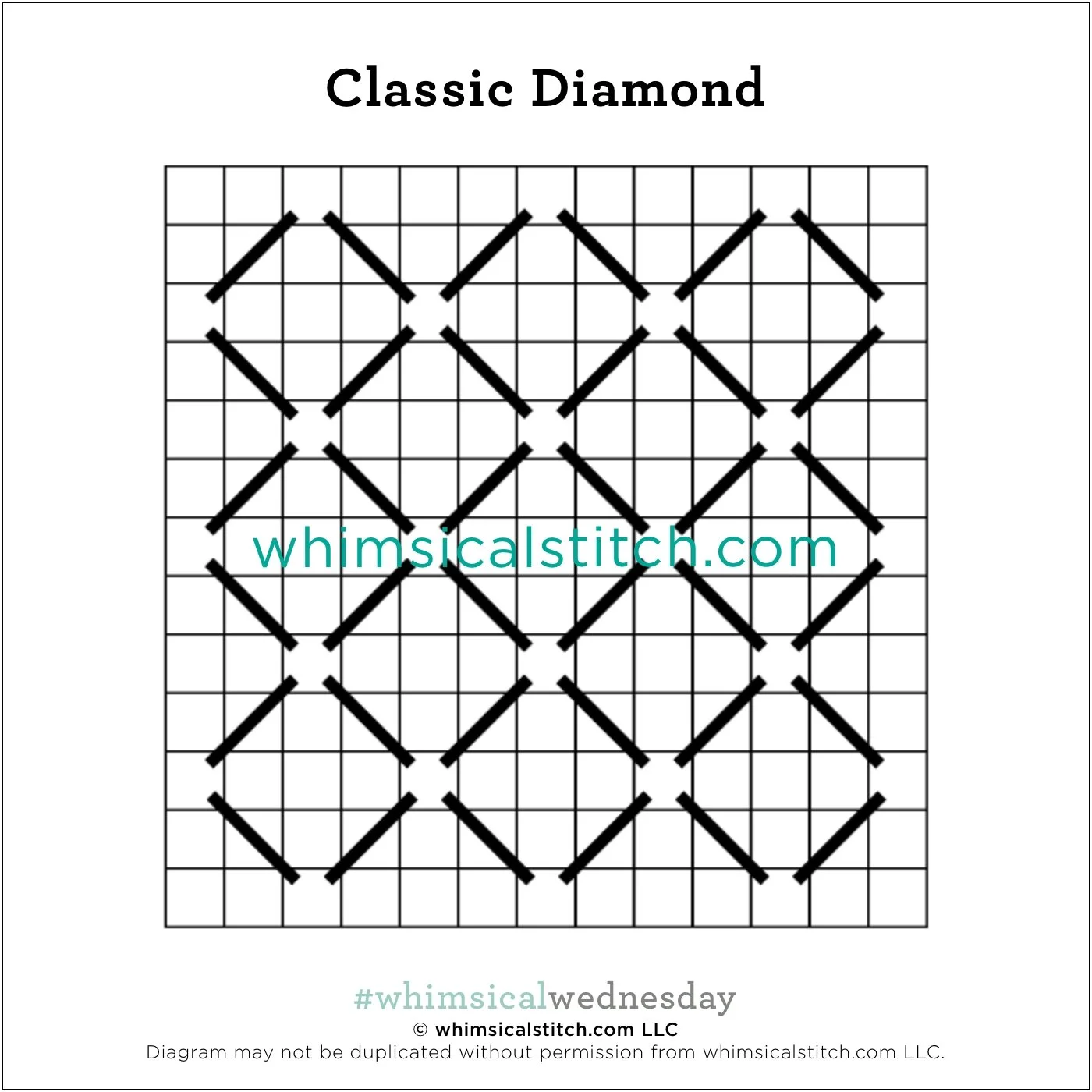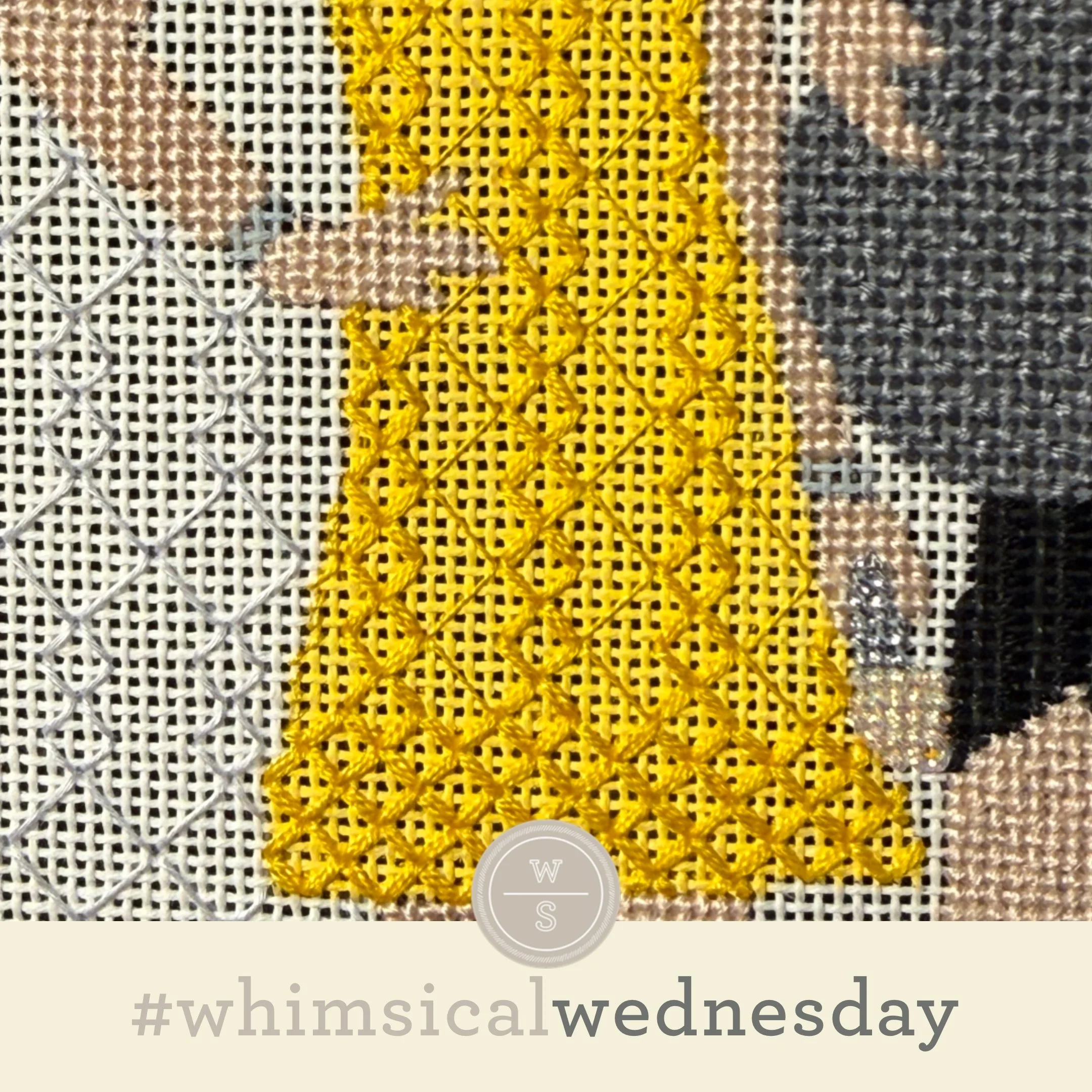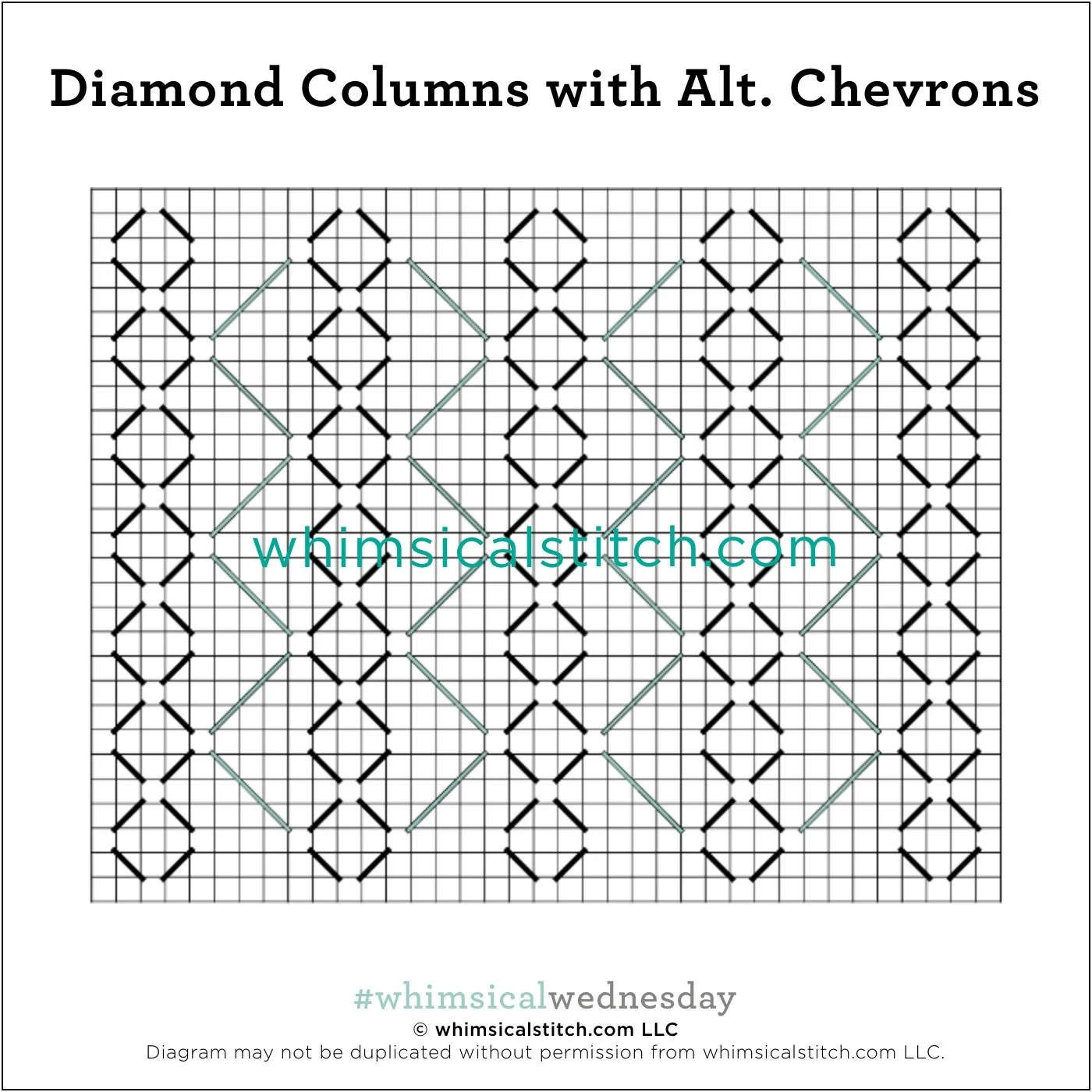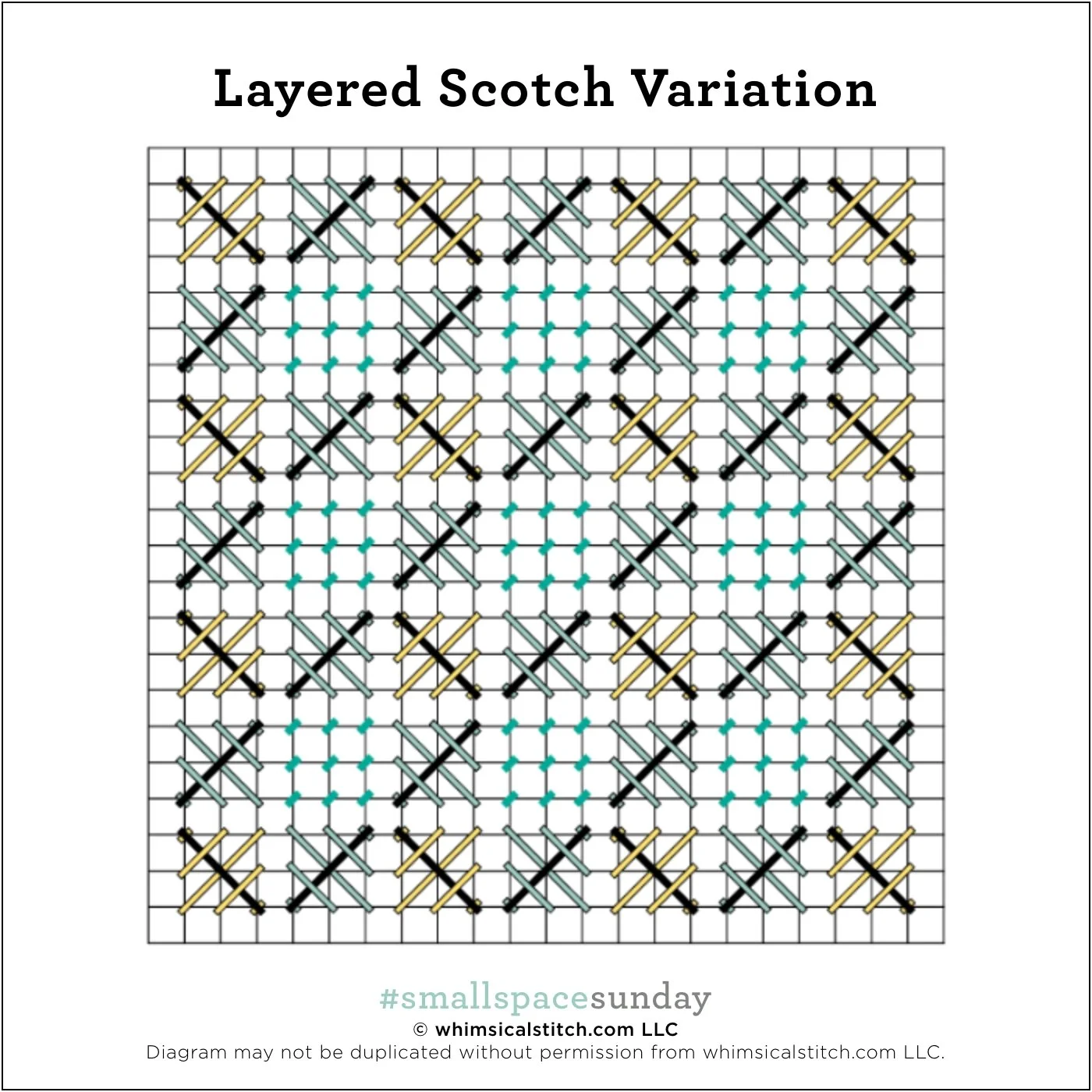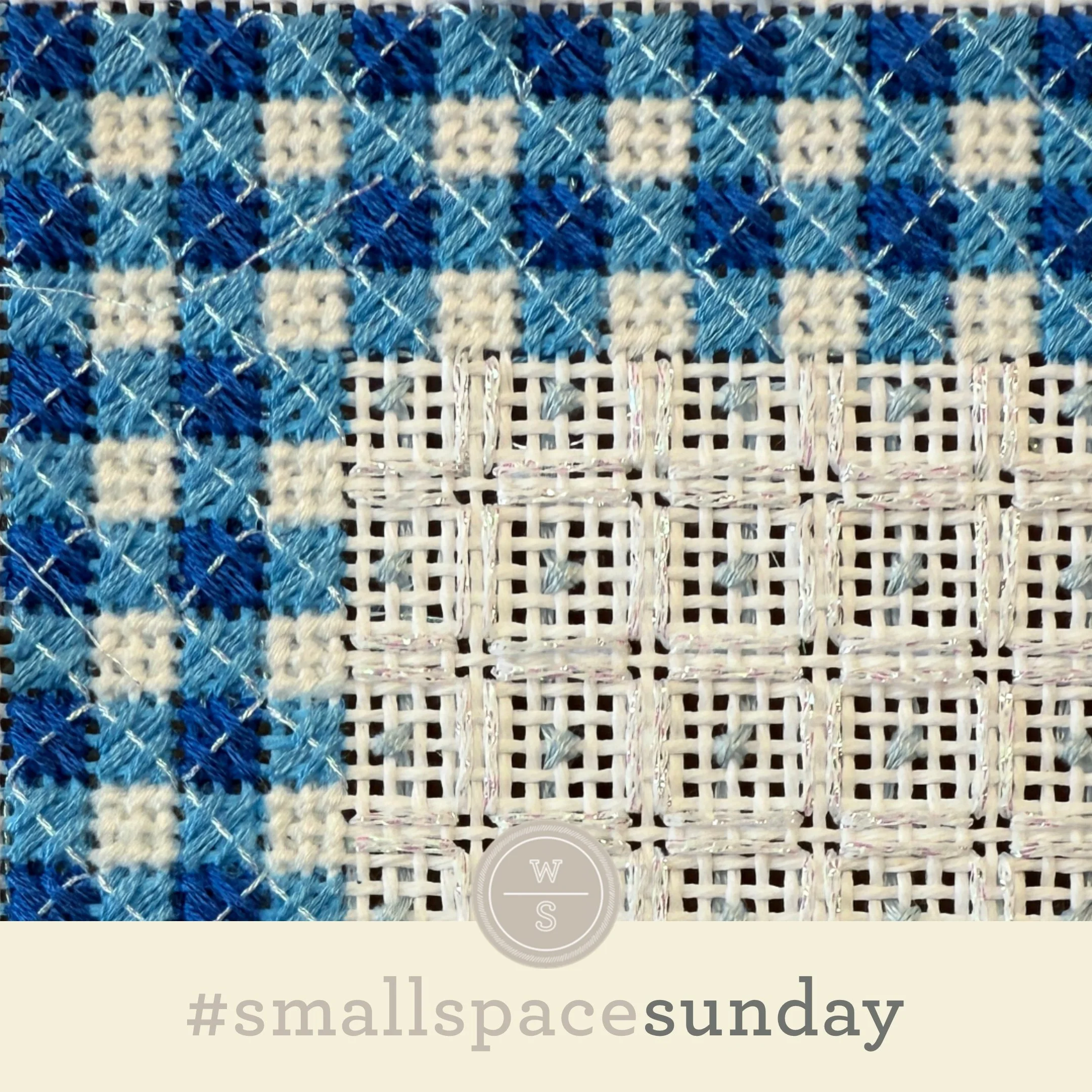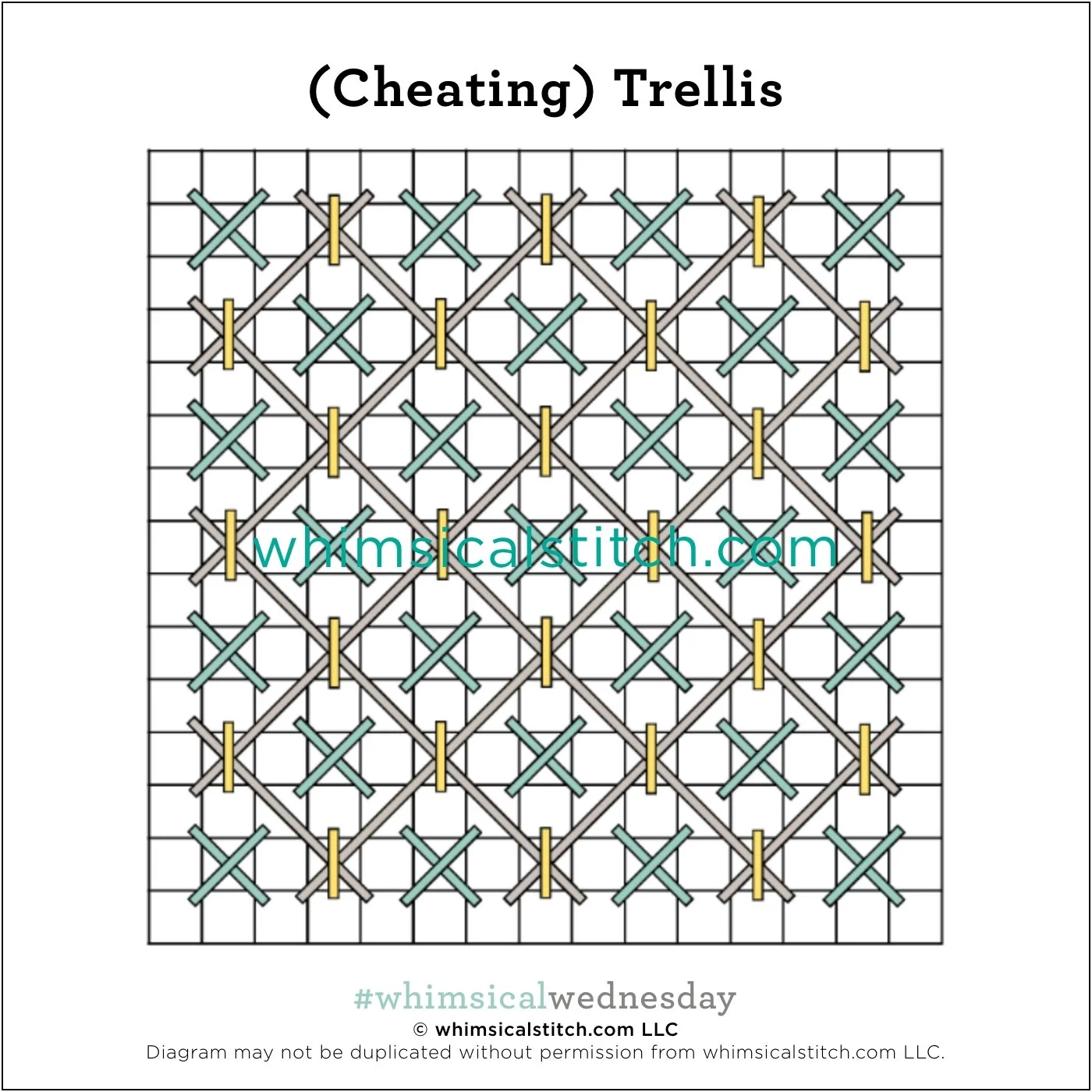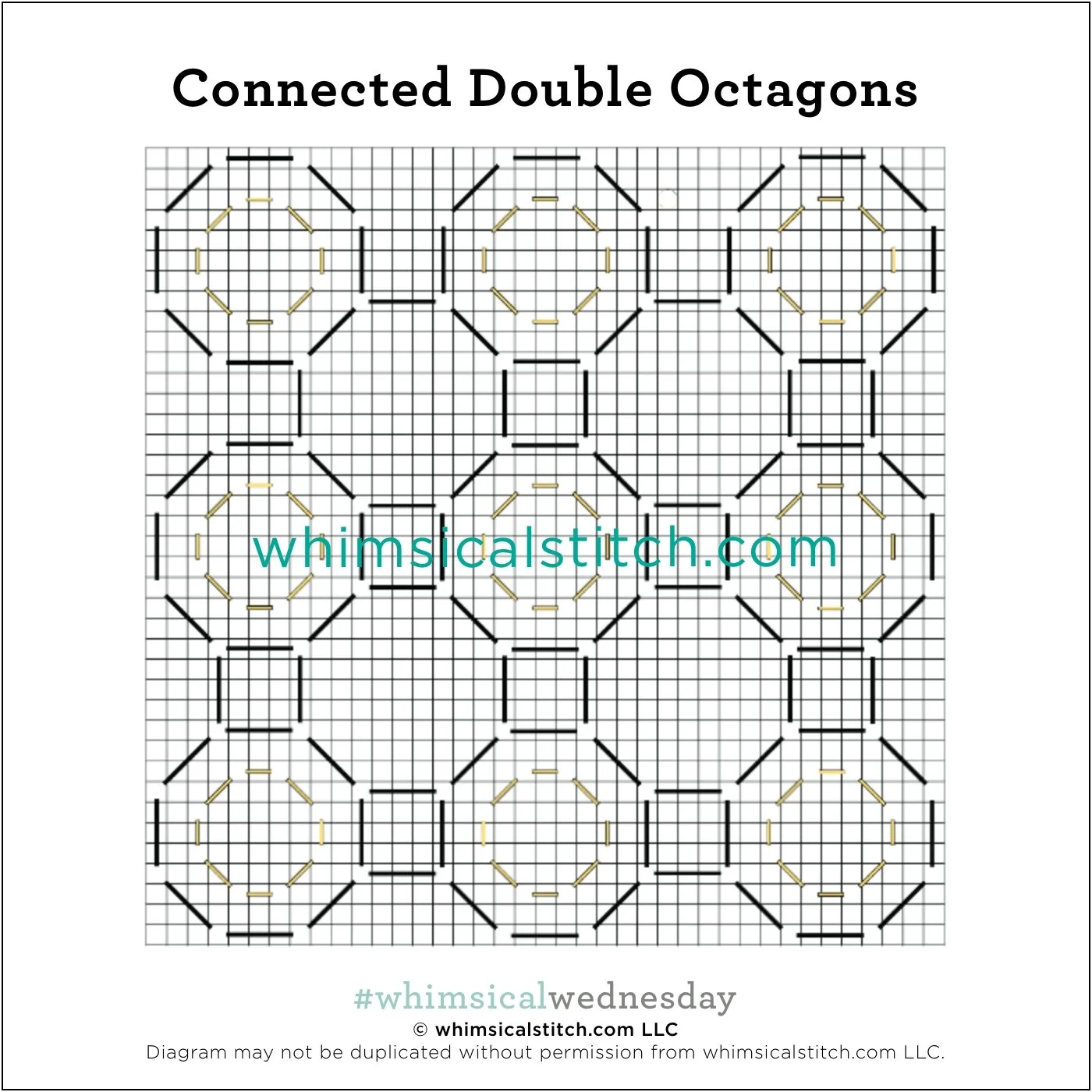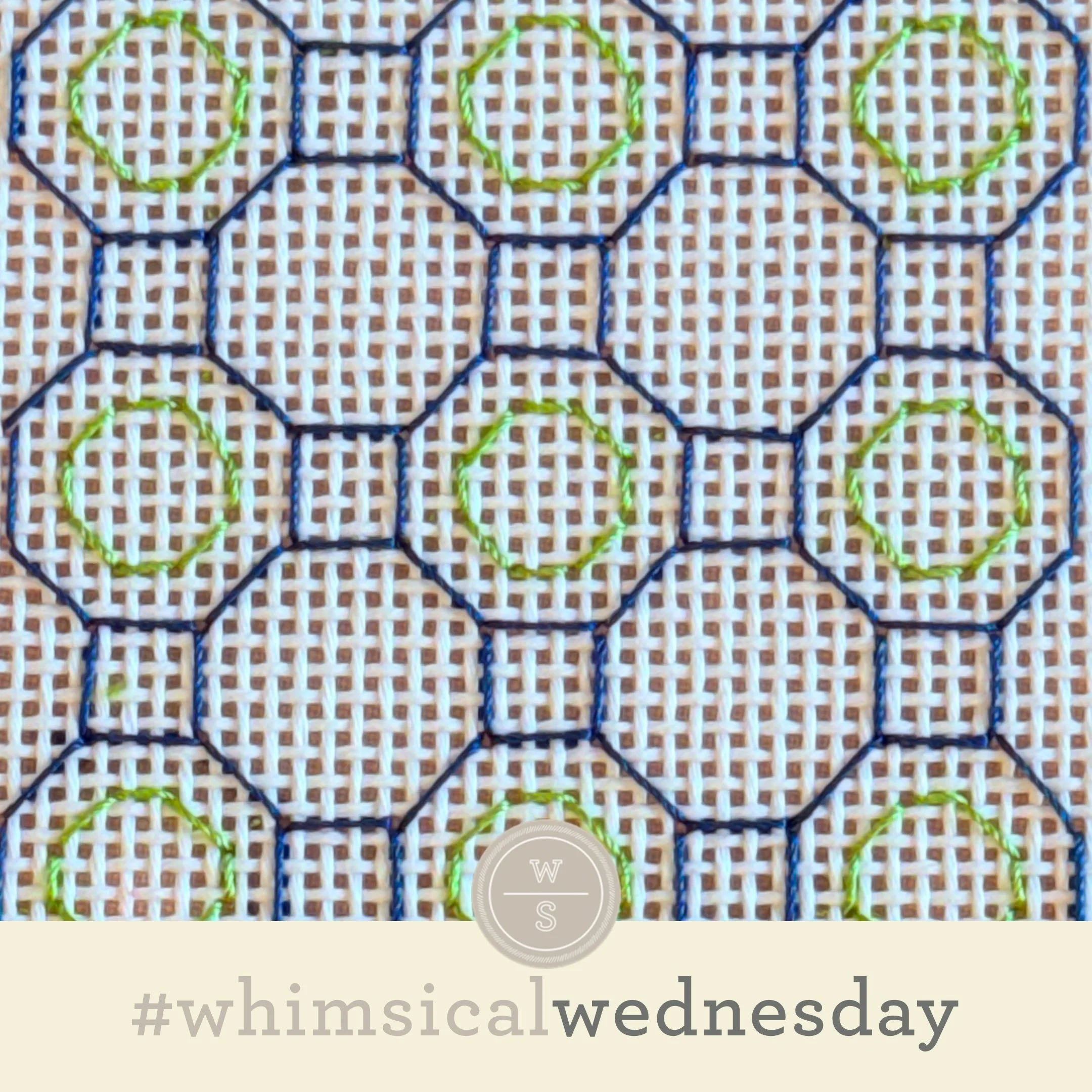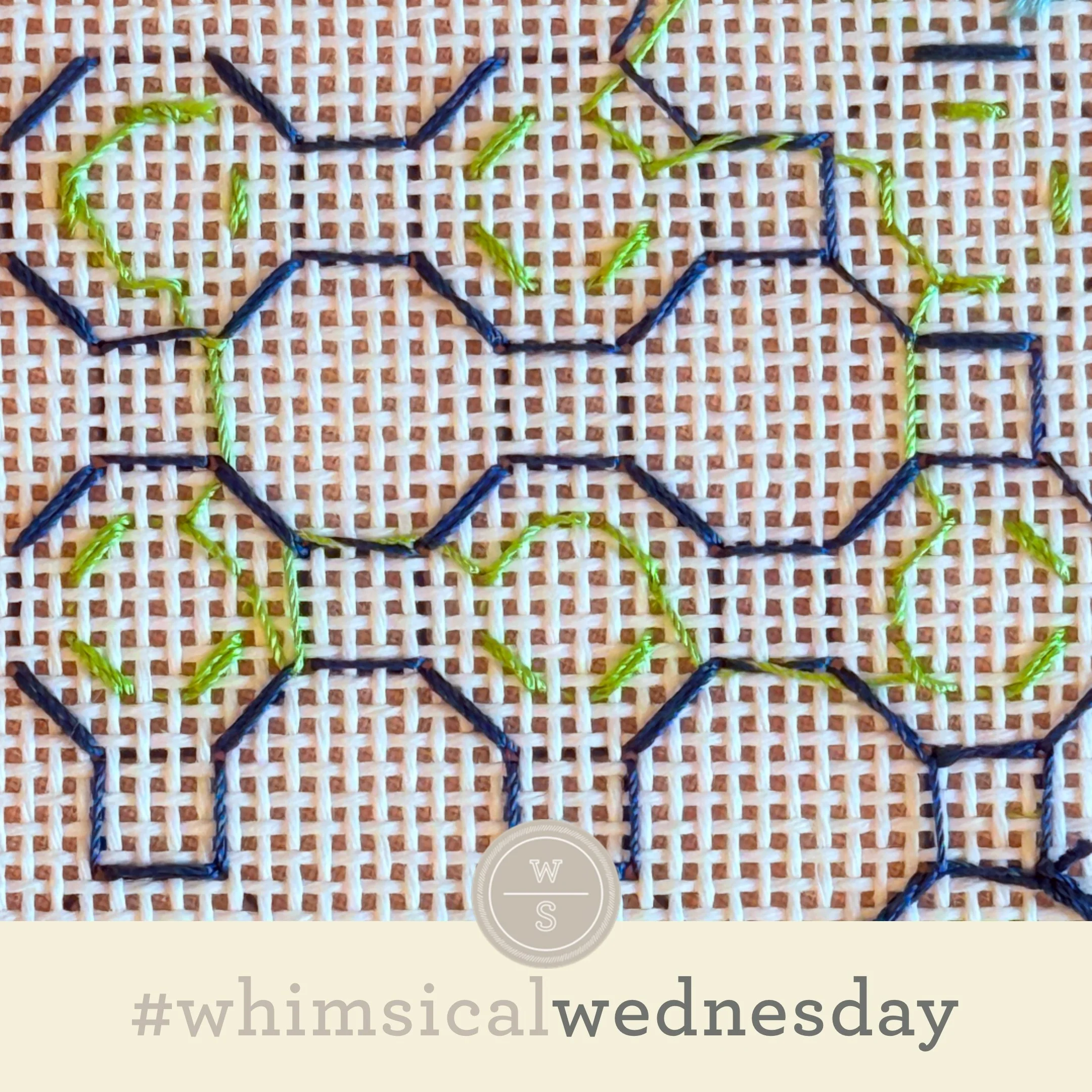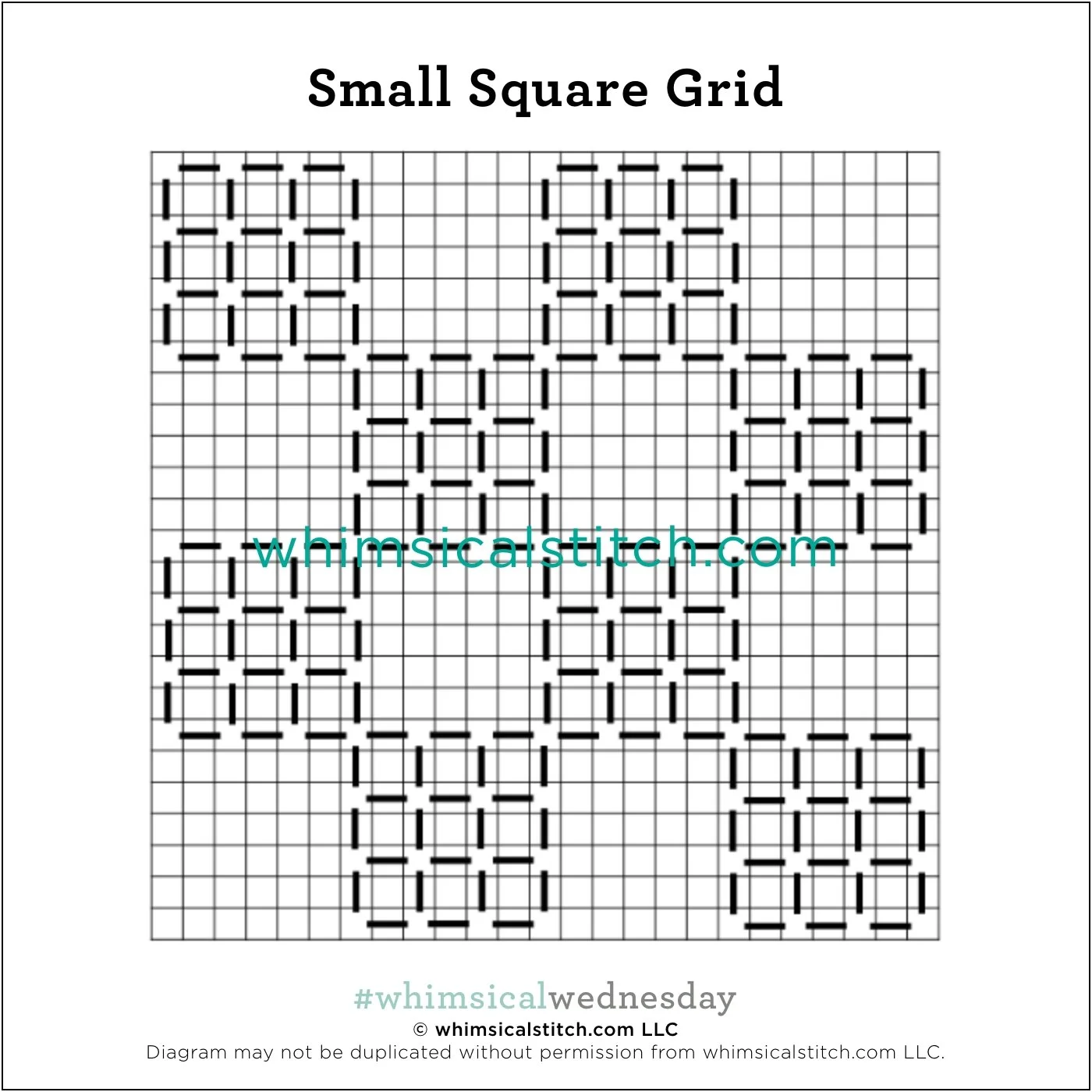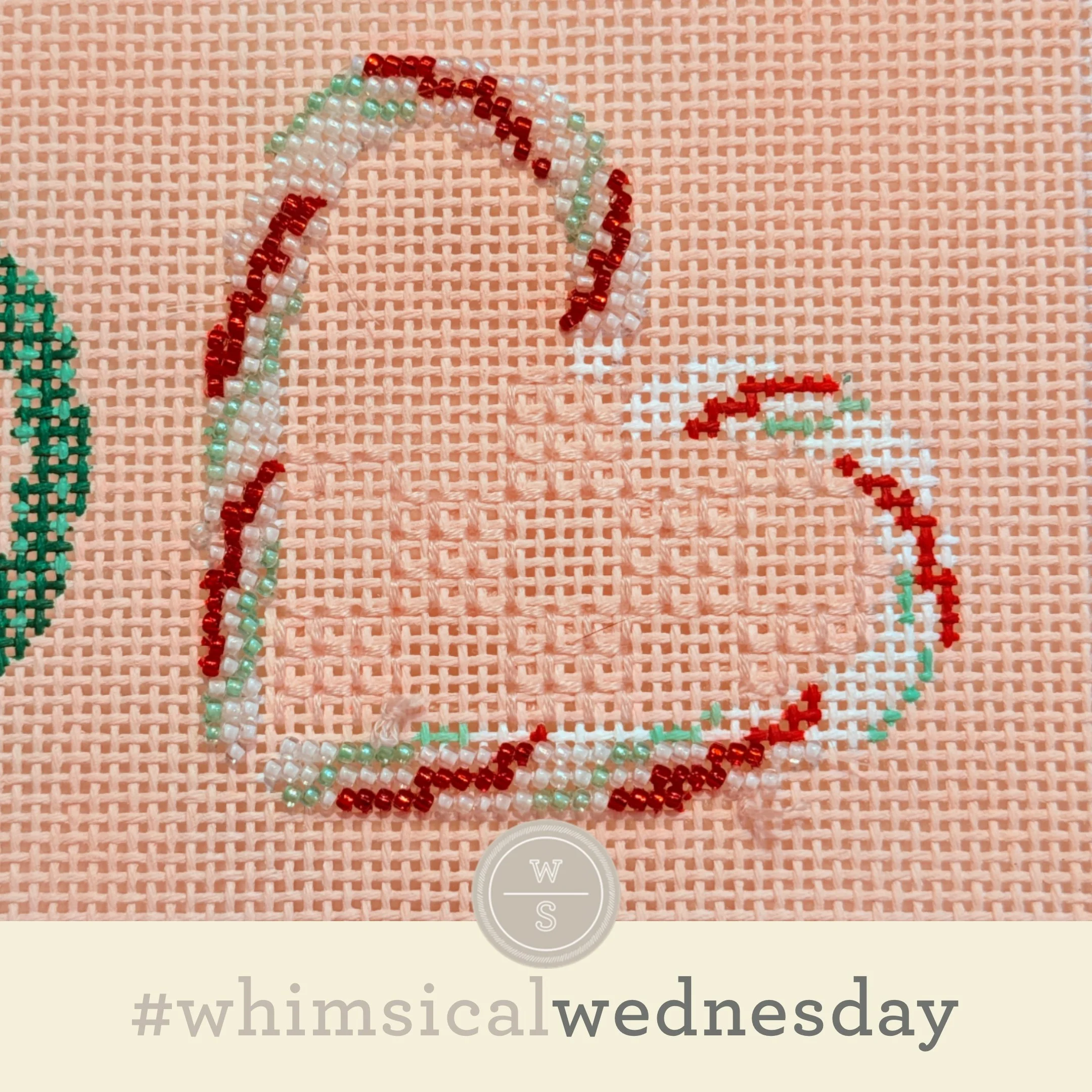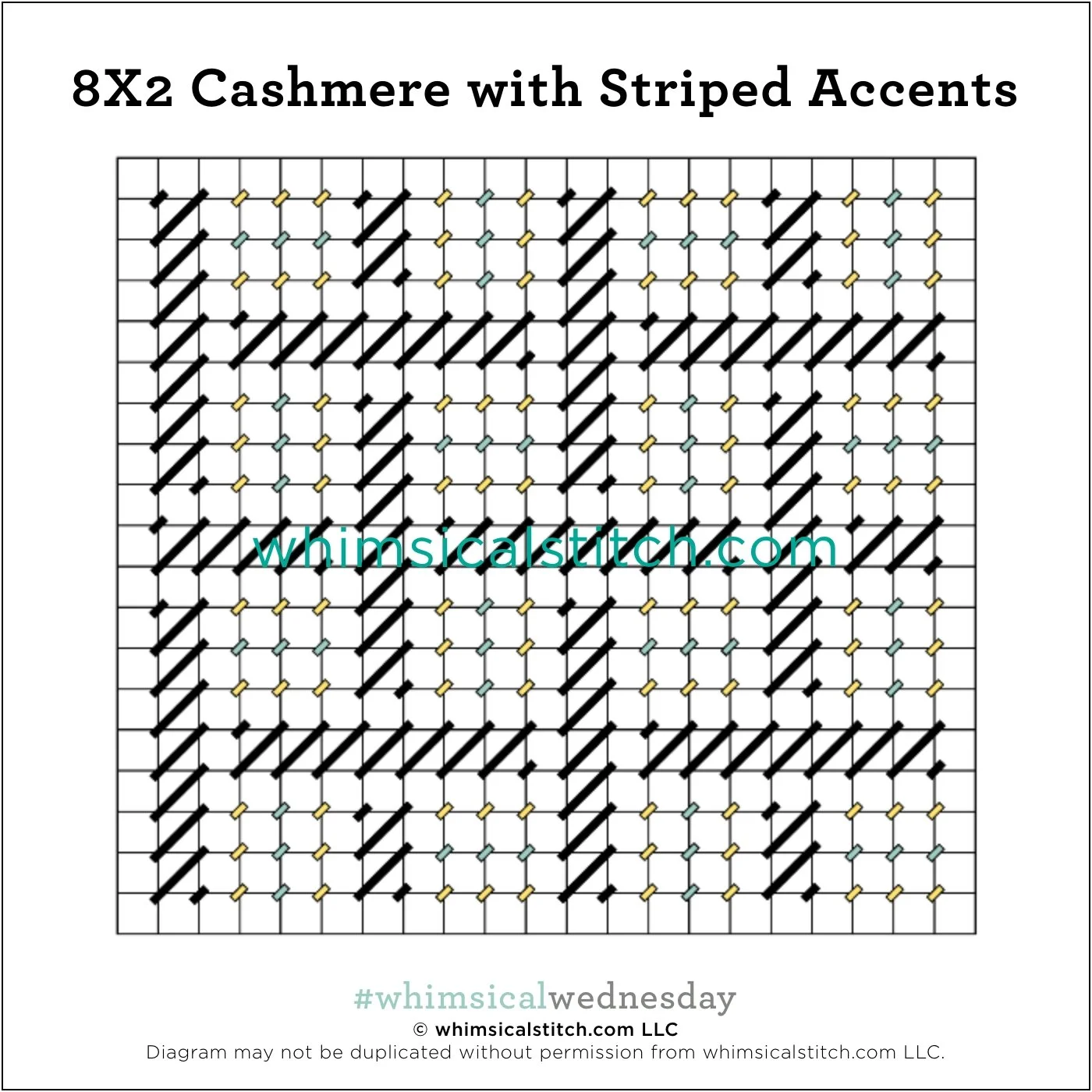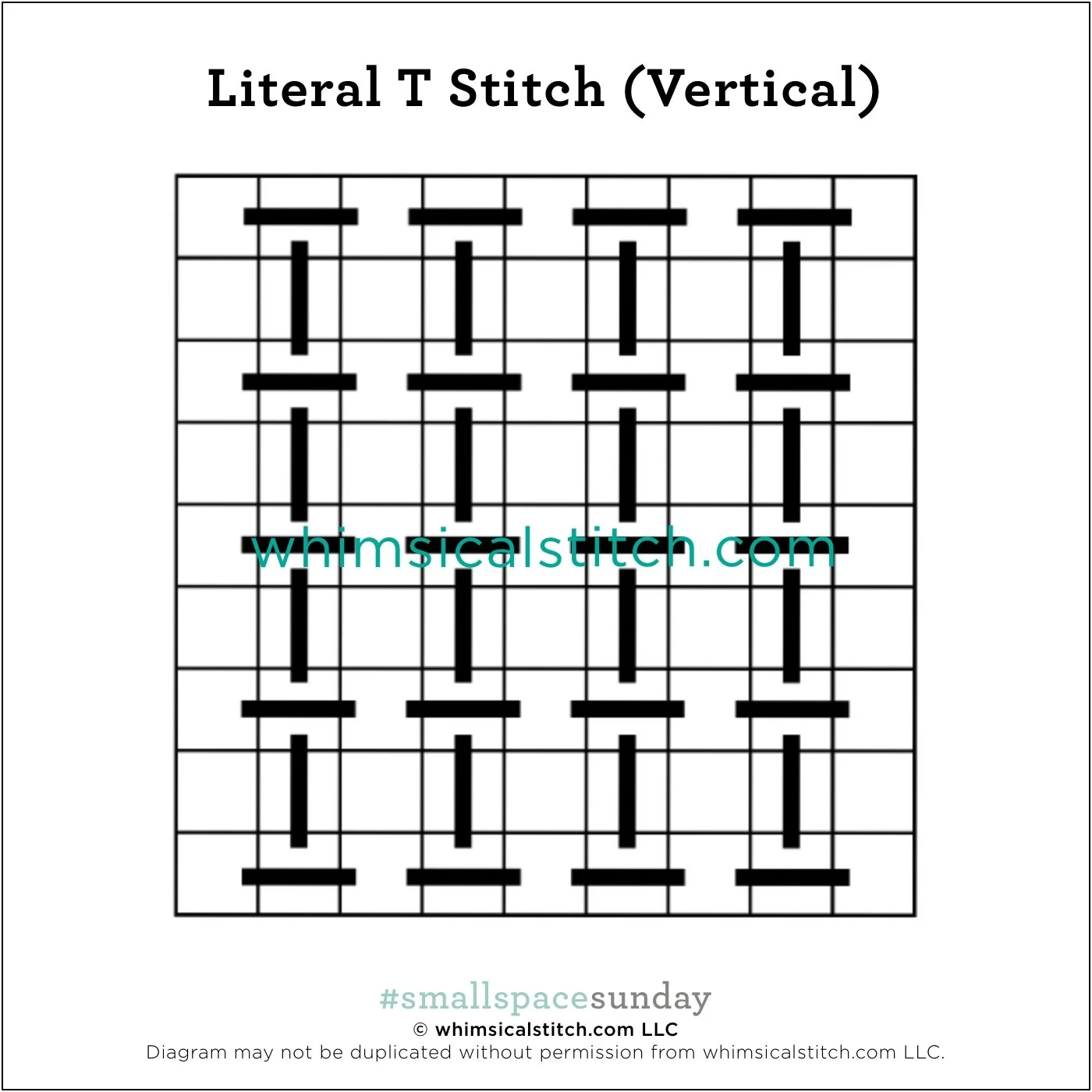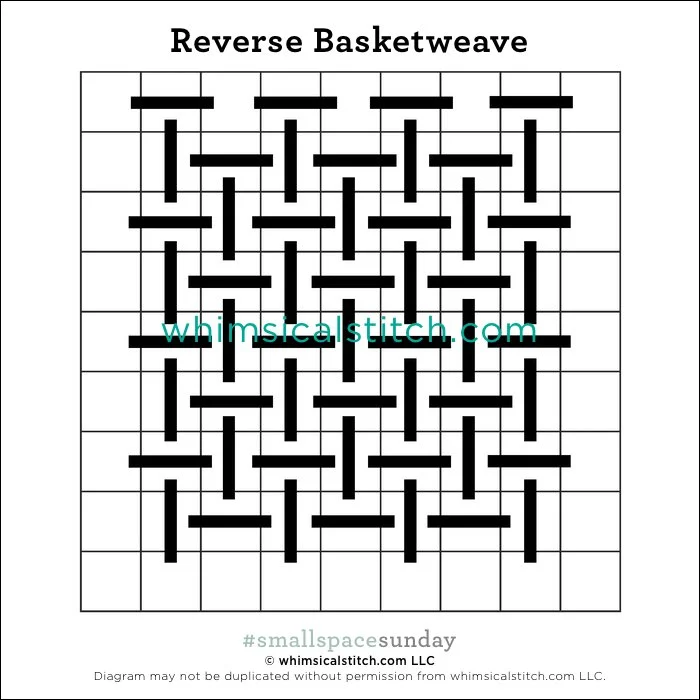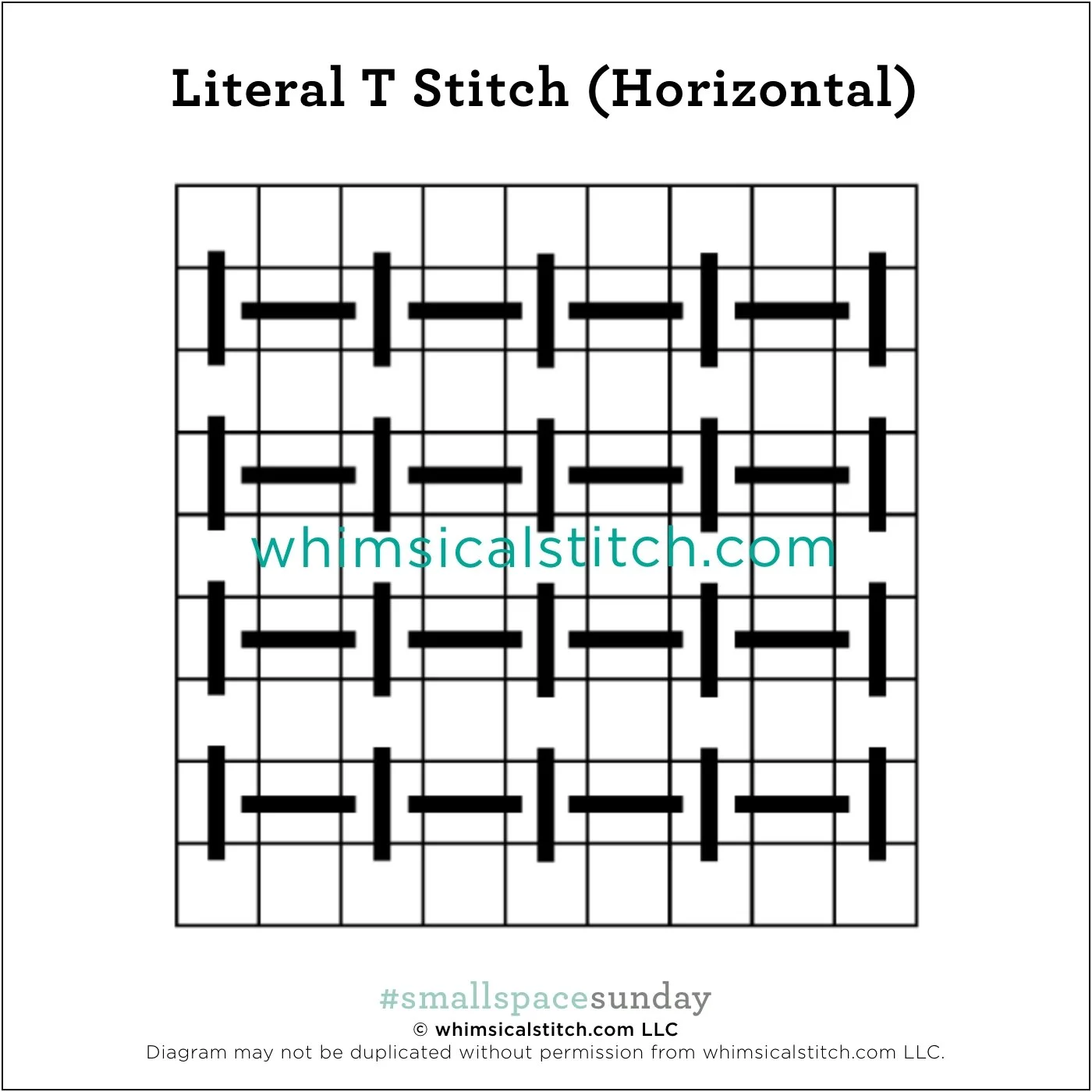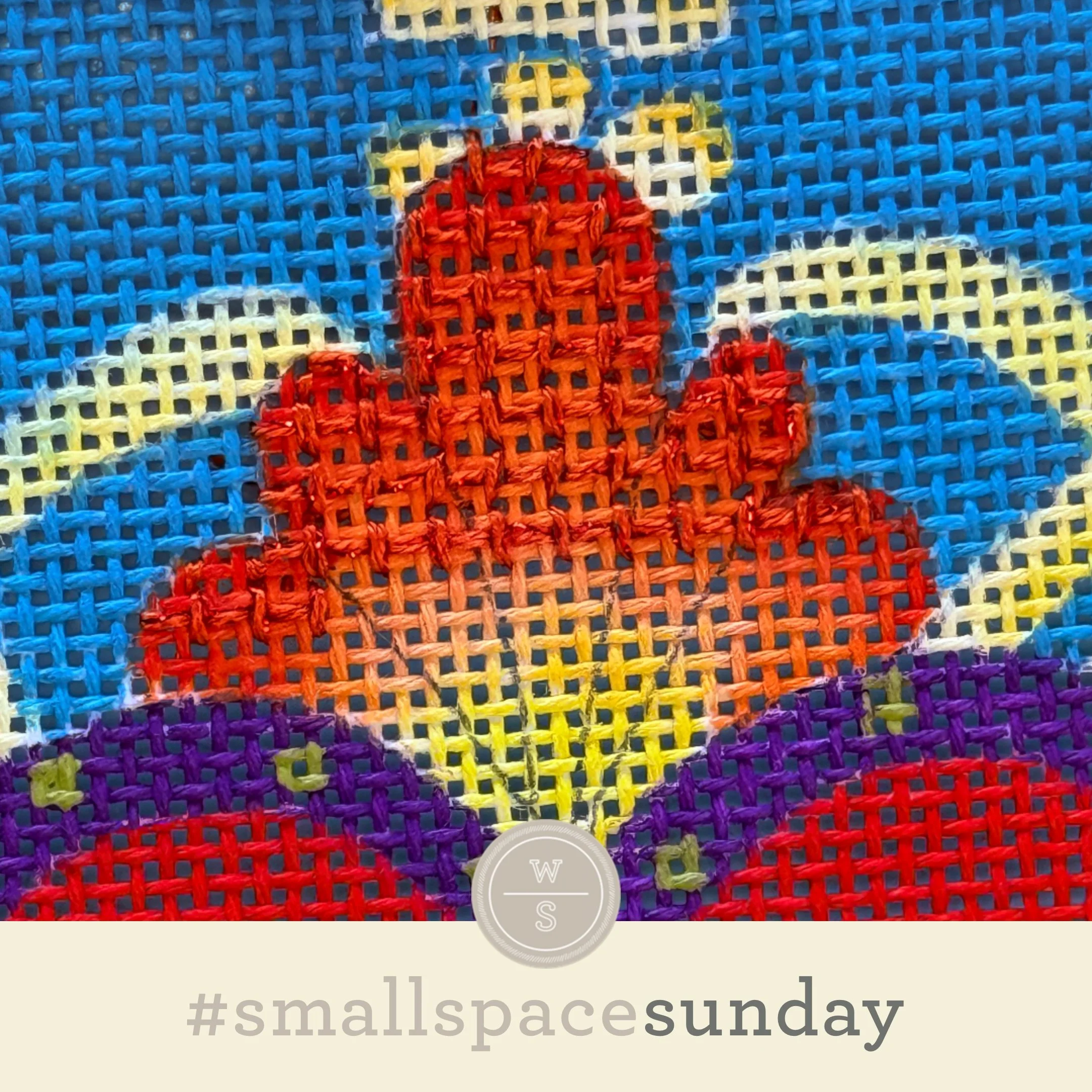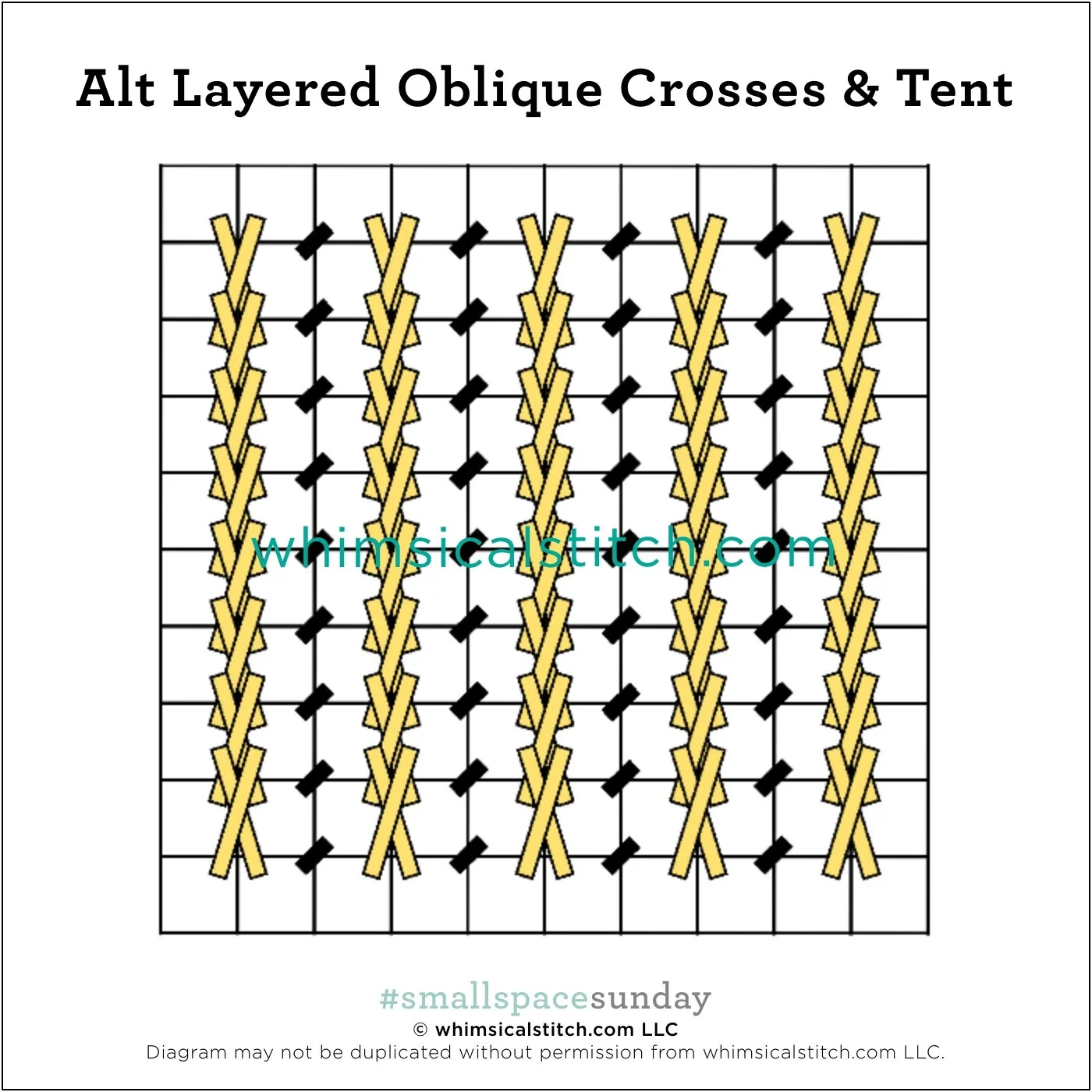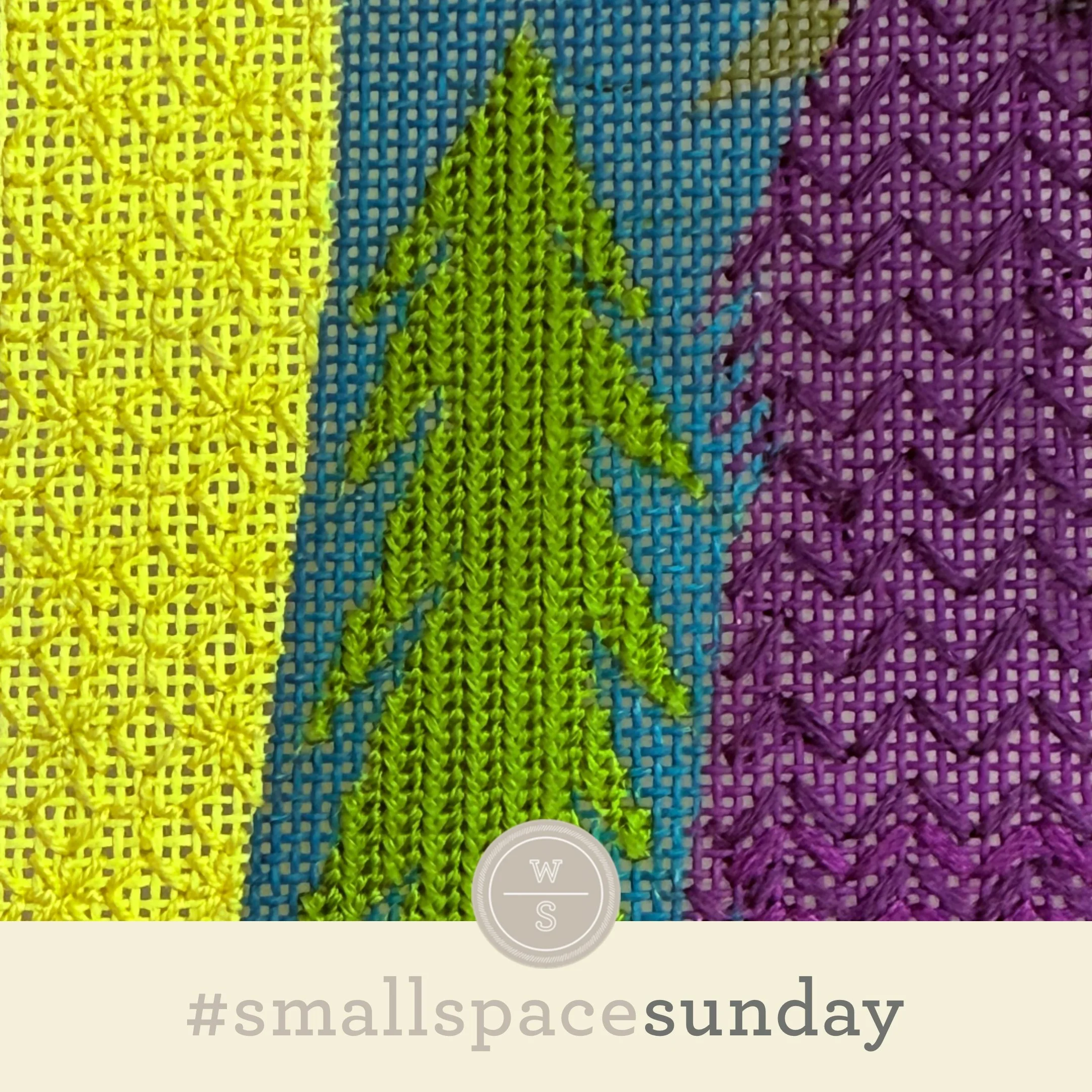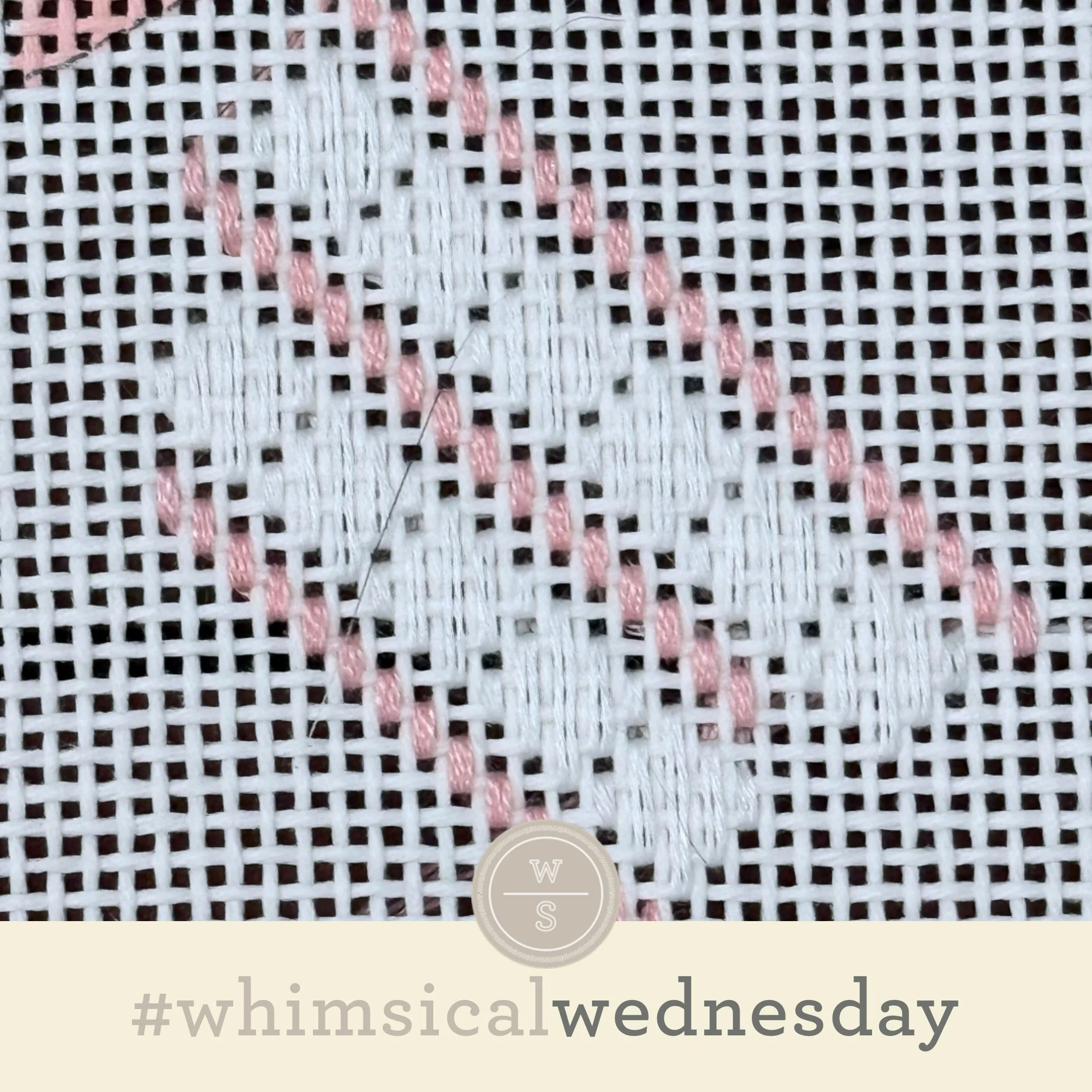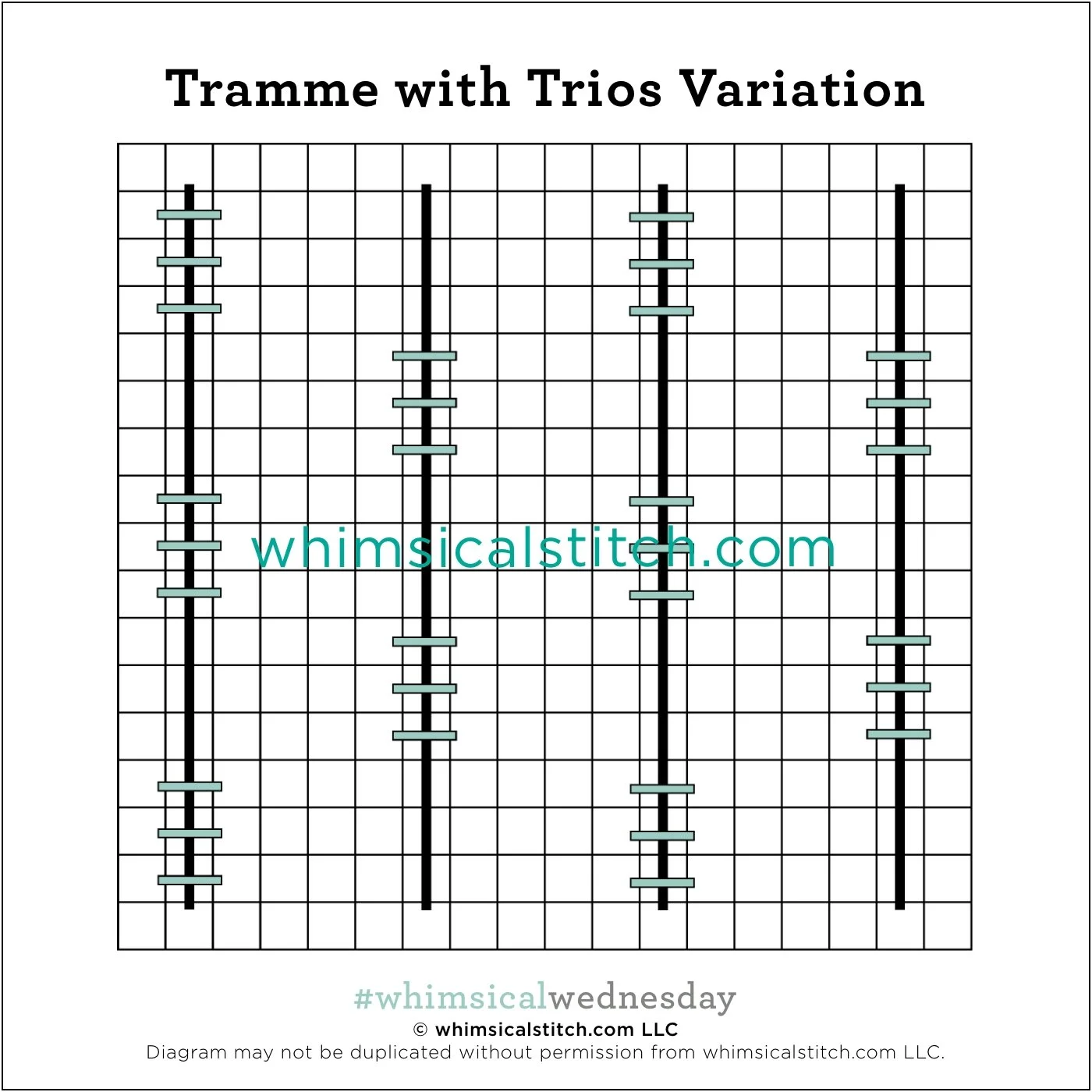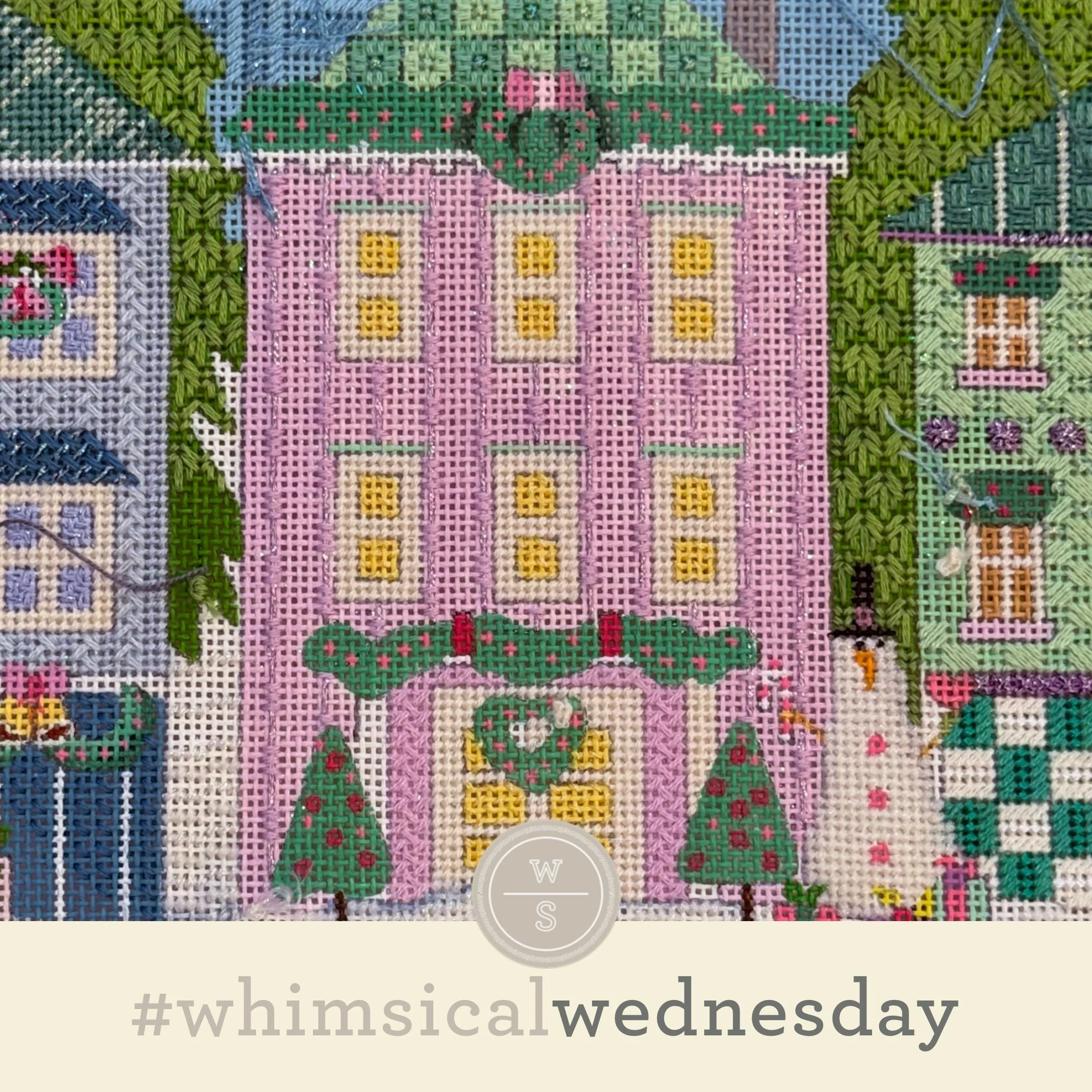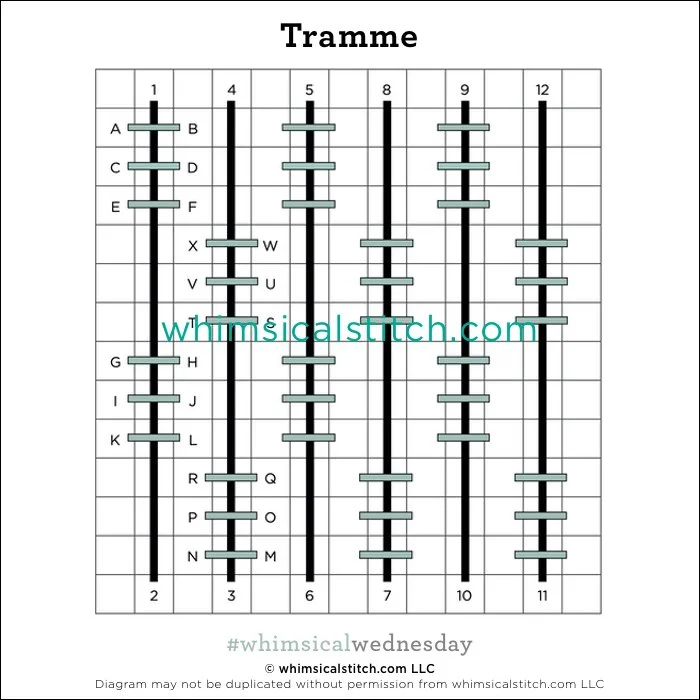Today’s stitch is a diversion from the instructions I offered a certain student in the Atlanta area. (Cough, cough.) And I love what Ilene did, and then I took it a tiny bit further.
Here’s where we started. The canvas featured a very popular pop performer in a variety of dresses. So, I incorporated simple decorative stitches with more elaborate ones to keep things balanced. I recommended the diamond stitch, which I consider a classic, for the yellow dress. She added the diamonds as a bottom border (darling decision) and then added diamond columns. (Of course she did.) She filled the space with larger diagonal stitches for charming, but still subtle, accents. She used four plies of Planet Earth Silk Floss for the black lines and one ply for the aqua lines. And I love it.
But I couldn’t help but wonder what an expanded version of this would look like. The stitch she created was perfect for the shift dress. But what if this was for a larger background? So, I did what anyone does the night before a blog post is due. I created a variation and stiched a sample at 8:00 last night. I alternated the direction of the chevron stitch to make more diamonds. Well, technically, diamonds with diamonds inside.
As you can see, there are so many places diamonds (of all sizes) can take you. Backgrounds, clothing, and wrapping paper are just three ideas off the top of my head. Have fun with it!
As you are auditioning stitches (from any stitch source), count the number of canvas threads on the diagram that match your mesh size. And there you have what an inch of the stitch will look like. Evaluate that against the area where you plan to use the stitch and make your final decision. If you start integrating this step into your stitch selection process, you may be surprised at how many stitches you think are large are much smaller than you realize.
By (sometimes) including this step in my own process, I find I am now integrating much longer stitches than I ever thought I would. I used to think a stitch six rows long was super big. I have very much changed my tune, which has helped me expand my creativity, especially for large-space stitches.
Today’s stitch diagram, along with all other #whimsicalwednesday and #smallspacesunday stitch diagrams, can also be found on a Pinterest board here. Be sure to follow whimsicalstitch.com on Facebook, Pinterest, Instagram, and Twitter.
If you like what you see on this blog, there's more. Mary’s Whimsical Stitches is a series of four books offering contemporary how-to collections of more than 200 stitches (in each volume) for all stitchers, regardless of skill level. All books include updated and sequenced diagrams from this blog, plus a collection of all-new stitches from private lessons and other class projects. Visit here to find a needlepoint retailer that carries my books.
New to needlepoint or looking for a refresher? Please download a handy how-to guide covering basic needlepoint stitches and stitch compensation techniques along with new top-line information on needlepoint materials and tools, how to handle threads, and other helpful needlepoint resources.
whimsicalstitch.com also sells Stitch Guides and Stitch Concepts for Melissa Shirley Designs, Zecca Designs, Sandra Gilmore, Purple Palm, Maggie, and Penny MacLeod, and many more. Click here to see the newest guides and click here to see the entire collection.
I hope you have the perfect spot for this stitch! Please enjoy! Have a wonderful #whimsicalwednesday!
A Note about Diagrams
I use color in diagrams to make them as clear as possible. The primary function of different colored lines is to illustrate a stitch sequence. For example, the layering of colors demonstrates you add them in that order. They can also provide ideas on integrating additional threads (one line for each color). Or, you can use the same thread for all color lines. That's where I encourage you to use your imagination for the space you are stitching!


